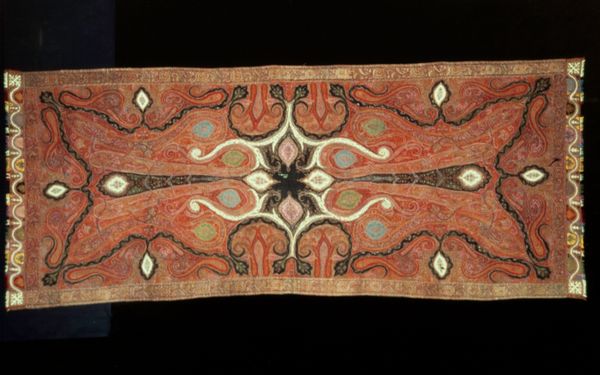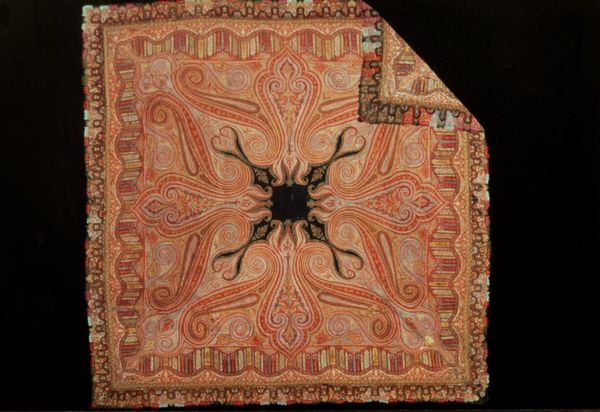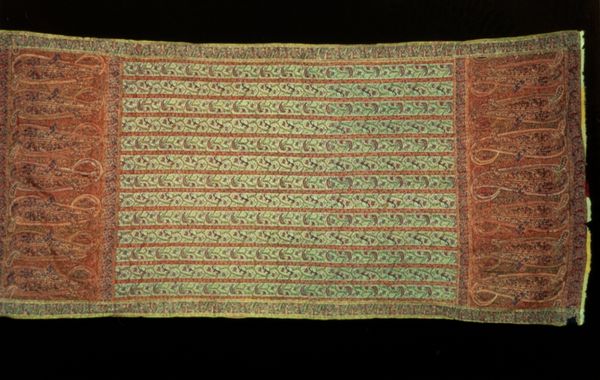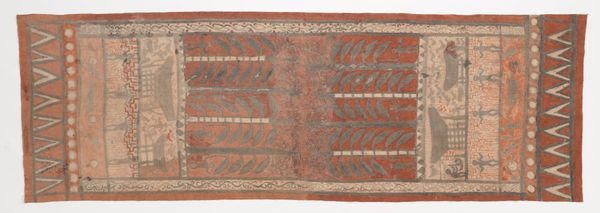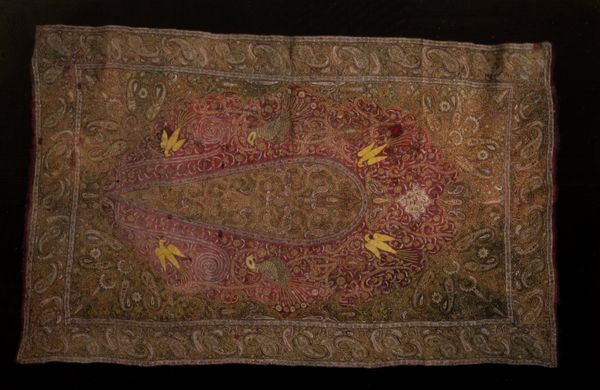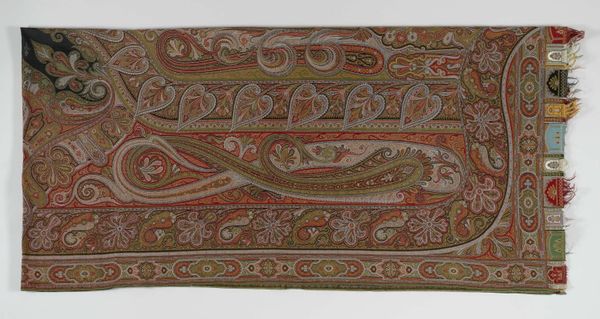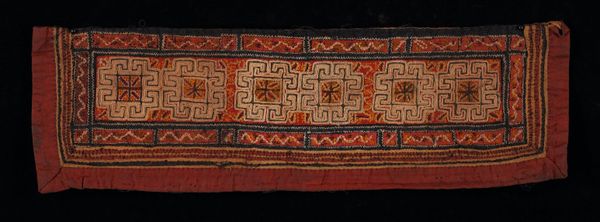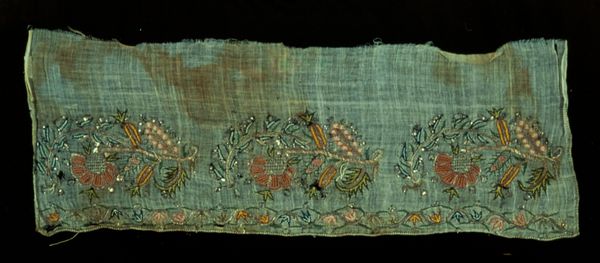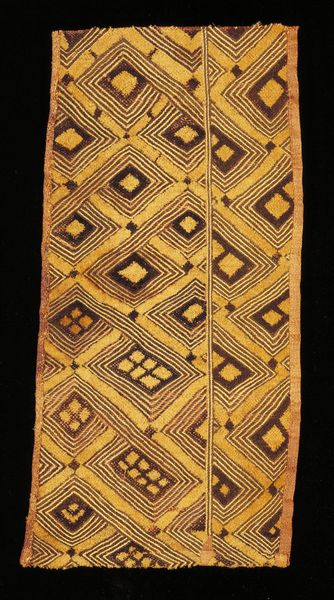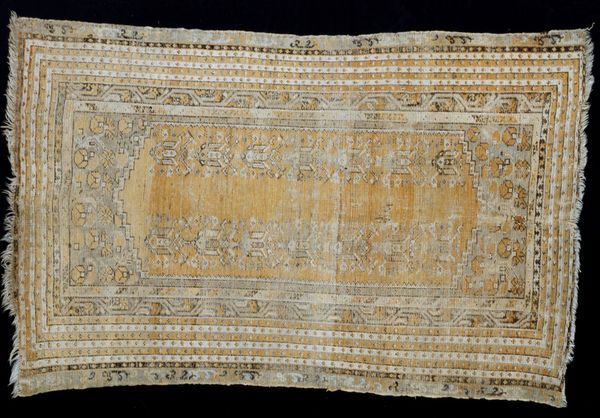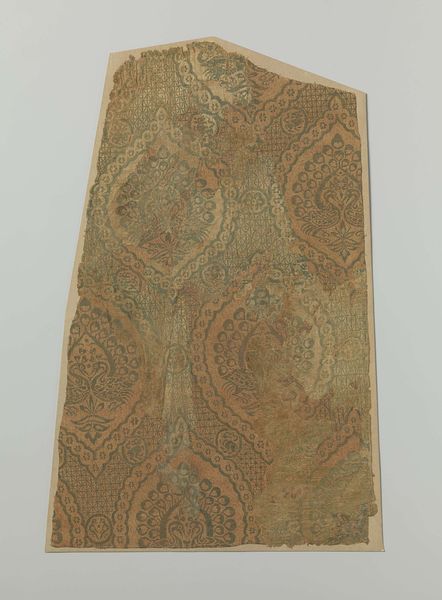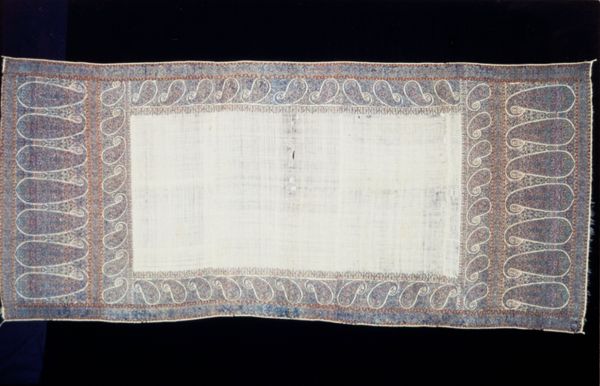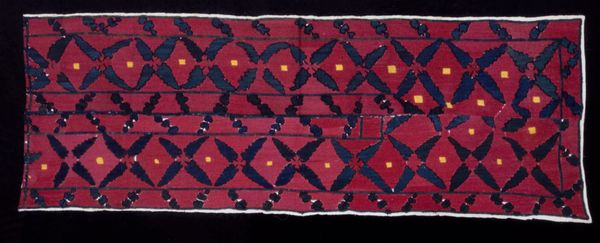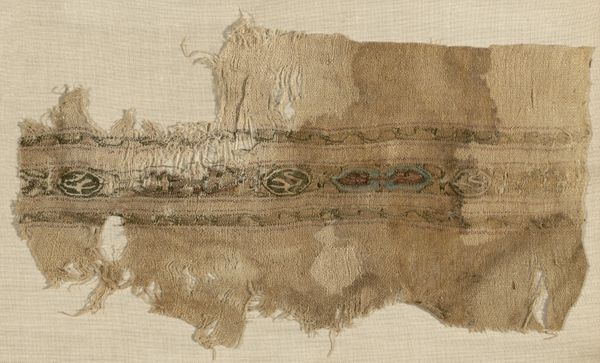
textile, cotton
#
textile
#
folk art
#
folk-art
#
cotton
#
decorative-art
Copyright: Public Domain
Editor: Here we have an intricately designed textile, a "Long Shawl" from around the 19th century. It’s made of cotton and feels really ornamental with those flowing shapes. The paisley patterns make me think of swirling water and fire somehow, despite the faded colours. What significance might these swirling patterns hold? Curator: The enduring allure of paisley lies precisely in its ambiguous symbolism. Doesn't it call to mind, simultaneously, the buta motif's ancient roots in Persia and India, representing fertility, life, and eternity? Yet, consider how this very symbol was absorbed, altered, and romanticized within European fashion during the 19th century. Editor: That's a really interesting dichotomy – something ancient reimagined as high fashion! Curator: Indeed. Look at how the motif repeats and adapts across the entire shawl. The layout of these swirling shapes almost evokes movement… perhaps an attempt to weave together diverse cultural threads. Where do your eyes keep returning on this design? Editor: Definitely to those almost teardrop shapes filled with tiny, dense designs; the way they curve feels dynamic, but also controlled. Is there any meaning to how symmetrically arranged they are? Curator: Symmetry can represent harmony and balance, perhaps reflecting a desire for order within a world of constant flux. It could symbolize social harmony as well, or idealized natural world. The careful detail contrasts those larger swirling motions across the cloth. Editor: I hadn’t considered the aspect of social symbolism with those repeated paisleys, very insightful. Curator: This textile bears witness to a fascinating cross-cultural dialogue—a story woven into every thread.
Comments
No comments
Be the first to comment and join the conversation on the ultimate creative platform.
